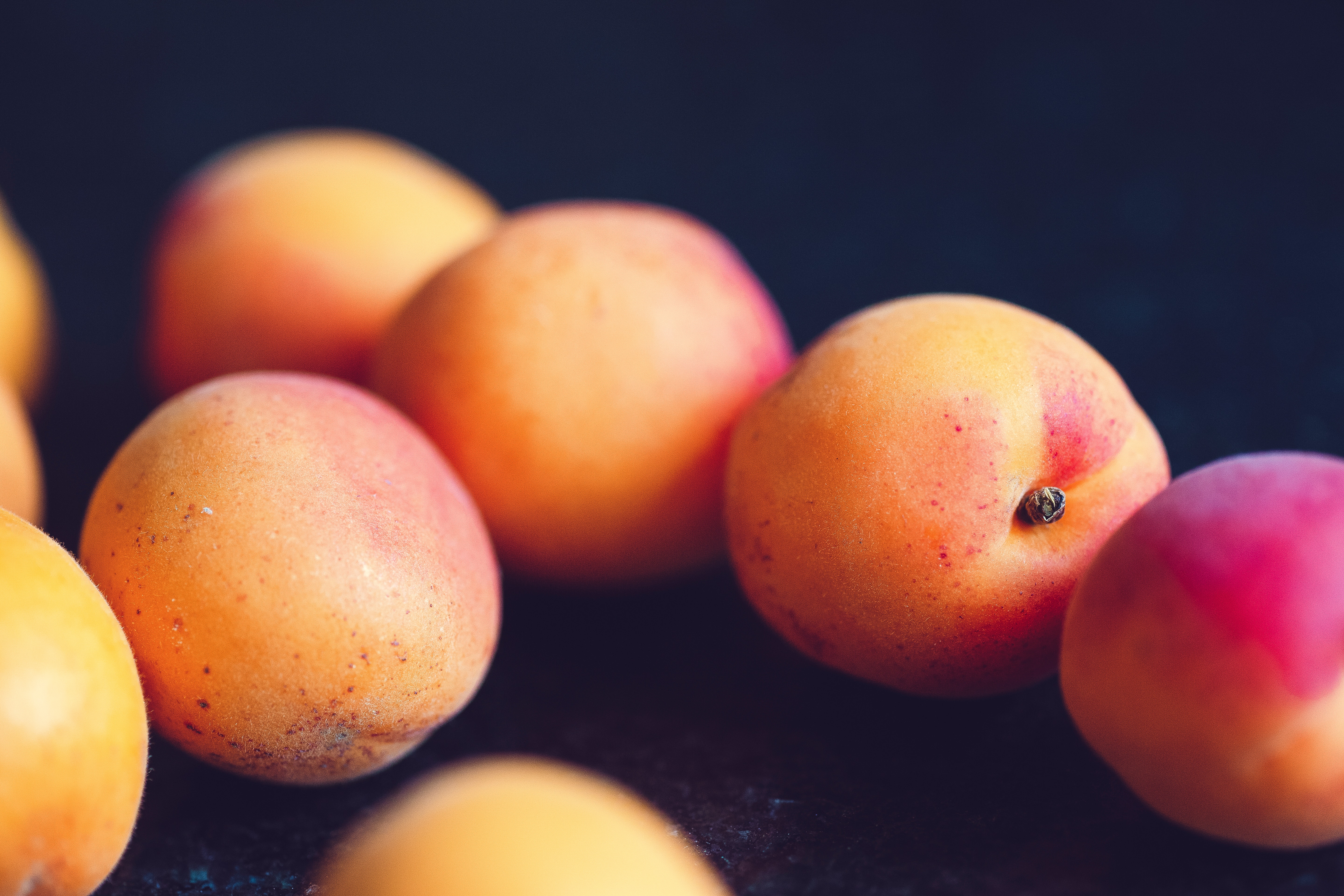Apricot Tree Information and Varieties

This post is also available in:
This post is also available in:
![]() Español (Spanish)
Español (Spanish) ![]() Français (French)
Français (French) ![]() Deutsch (German)
Deutsch (German) ![]() हिन्दी (Hindi)
हिन्दी (Hindi) ![]() العربية (Arabic)
العربية (Arabic) ![]() Ελληνικά (Greek)
Ελληνικά (Greek) ![]() Português (Portuguese (Brazil))
Português (Portuguese (Brazil))
The Apricot (Prunus armeniaca) is a deciduous fruit tree (it loses its leaves in the winter) originating from regions of China and Central Asia. It belongs to the Rosaceae family and the genus Prunus, which also includes other significant fruit trees like almond, cherry, peach, and many more.
The trees can reach up to 12 m (39ft) in height, but usually, they are pruned and maintained to 3.5-4 m (11.5-13 ft). The apricot tree has ovate leaves with an average length of 5-9cm (2-3.5 inches). It blooms during early spring, producing beautiful white-pinkish flowers with five petals, either single or in pairs, that emerge before the tree’s foliage in early spring. The average Apricot tree can produce fruits (reproduction phase) after the 2nd to 4th year of its life and remain productive for around 20-25 years or more. The fruit botanically is characterized as a drupe. The well-known Apricot has sweet, aromatic, juicy yellow to reddish flesh and white-pinky, yellow, orange, or red glabrous or pubescent skin. The fruit contains a single seed inside a woody husk known as a stone. Apricot pits contain a substance called amygdalin, which is converted to cyanide upon chewing or grinding the kernel.
Apricot Environmental requirements
The Apricot tree thrives in areas characterized by cool winters and warm dry summers. To reduce the risk of fungal infections, it is important to cultivate apricots in areas with low relative humidity during summer. Equally important to maximize tree growth is to have unblocked access to direct sunlight for at least 8 hours daily. Lack of sun exposure will reduce the qualitative characteristics of the fruits.
Apricots are commonly grown in USDA hardiness/planting zones 5-8 and, like many other fruit trees, require a minimum amount of chilling and heating hours to break dormancy and develop an excellent vegetative growth blooming and fruit yield. Depending on the cultivar, apricots need around 300-1200 hours (or chilling units) of low temperatures (0 to 7 °C or 32 to 45 °F). On the other hand, the increase of the temperature is needed to initiate flower formation and development
Low temperatures are essential to break dormancy, and at this stage, the trees can survive even -25 °C or -13 °F (depending on the cultivar). From that point on, the trees become more and more sensitive to low temperatures (frost). More specifically, when the trees bloom (early-mid spring), a temperature of -3 °C and -6 °C (26 and 21 °F), that lasts more than 30 minutes may damage 10% and up to 90% of the flowers (and, as a result, decrease the final production). Moreover, frequent rainfalls during the flowering period can deteriorate the cross-pollination activity of bees, resulting in reduced fruit set and production of non-self-fertile varieties. The ideal temperature range for apricots during the growing season is 18-30 °C (65-85 °F). Temperatures above 35 °C (95 °F) may be harmful to the fruits and flowers. More specifically, temperatures of 38 °C (102 °F) during fruit enlargement and maturity can lead to pit burn and deterioration of fruit quality.
Apricot Varieties
While selecting which variety or varieties (for main variety or for rootstocks) to cultivate in one region, the farmer should take into account the:
- market (commercial use): fresh consumption or processing, resistance to post-harvest handling, shipping, shelf life, etc. Some commonly used varieties are: USA→ Royal, Blenheim, and Tilton, Europe→ Aurora, Bebeco, Amabile Vecchioni, Asgarabad, French, Bergeron
- quality characteristics of the fruits (fruit size, color, flavor, etc.)
- tolerance to environmental stresses (e.g., frost, physiological disorders, fruit split – skin cracking), and soil conditions. More specifically, in areas with colder winters, the farmer should select and plant cold-hardy varieties of apricots like ‘Moorpark’, Chinese’ (‘Mormon’), ‘Goldrich,’ ‘Harglow’ and ‘Tilton.’ These varieties bloom later during spring, but a late spring frost during blooming will be harmful, like in any other variety. On the other hand, in areas with mild winters, a very good choice for high-quality fruits would be the ‘Royal Blenheim’ (early variety). Additionally, in heavy clay soils with poor drainage, farmers are advised to use apricot varieties grafted to plum rootstocks (Myrobalan).
- chilling requirements (in warmer climates, the farmer should use varieties with less chilling requirements)
- resistance to pathogens and pests: resistance to bacterial spot during bloom, to canker, brown rot, etc.
- ability to self-fruiting or the need for cross-pollination between compatible varieties (e.g., Vivagold is self-sterile while Tomcat, Rival, and Goldbar are partially self-fruitful and should not be planted alone in an orchard)
Some commercial apricot varieties are the result of hybridization between apricots and plums. Some common examples of such hybrids are the ‘Aprium,’ ‘Pluot,’ and ‘Plumcot.’
References
- https://dpi.wi.gov/sites/default/files/imce/school-nutrition/pdf/fact-sheet-apricot.pdf
- https://extension.usu.edu/yardandgarden/research/apricots-in-the-home-garden
- https://web.extension.illinois.edu/hortanswers/plantdetail.cfm?PlantID=627&PlantTypeID=11
- https://www.researchgate.net/publication/
- http://digitalcommons.usu.edu/cgi/
- https://www.bctfpg.ca/horticulture/varieties-and-pollination/apricot-varieties/
- http://omafra.gov.on.ca/english/crops/facts/02-035.htm
- https://naldc.nal.usda.gov/download/CAT73401175/PDF
- https://www.ishs.org/ishs-article/717_37
- https://www.researchgate.net/figure/Chilling-and-heat-requirements-of-European-apricot-cultivars_tbl1_340024011
Apricot Tree Information and Varieties
Nutrition Value, Health Benefits, Uses, and Interesting facts about Apricot
Growing Apricot Trees for Profit
Apricot Soil Requirements, Soil preparation, and Planting
How to Propagate and Pollinate Apricot Trees
How to Train and Prune Apricot Trees
Apricot Trees Irrigation – How to water Apricot trees
Apricot Tree Fertilizer Requirements








































































